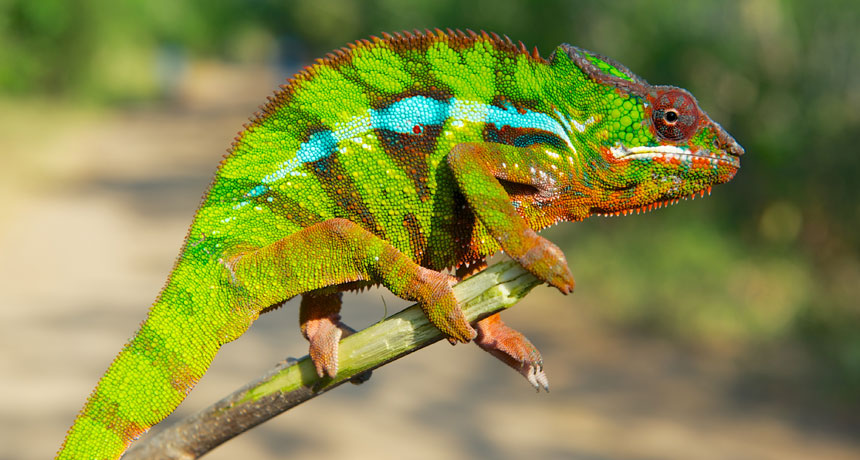Nanocrystals explain chameleons’ color shifts

Dazzling chameleons flash different hues by stretching and flexing reflective nanocrystals in their skin.
Michel C. Milinkovitch/www.lanevol.org

Dazzling chameleons flash different hues by stretching and flexing reflective nanocrystals in their skin.
Michel C. Milinkovitch/www.lanevol.org